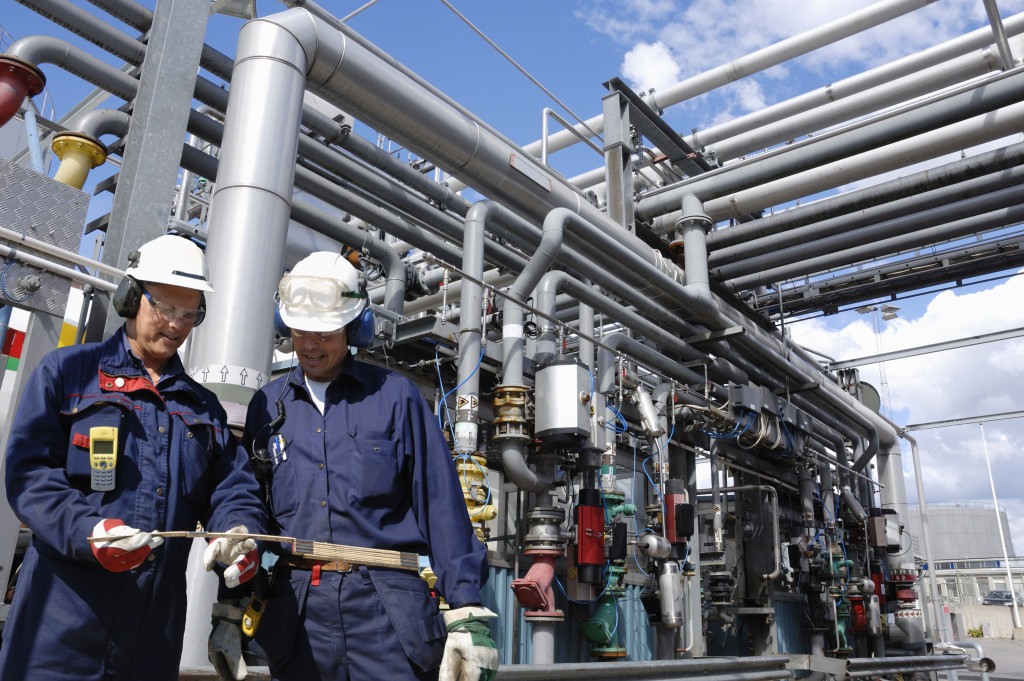- Infrastructure needs, such as power supply and industrial pipe materials, must be considered when building an industrial factory.
- Budgetary considerations must be factored in to give your factory an economically sound structure.
- The safety of workers and environmental regulations must be addressed when constructing a factory for optimal performance.
- Site selection should factor in the availability of resources for continued operation, and zoning laws and permits must be observed.
Building an industrial factory is a complex process that requires careful planning and consideration. From ensuring the safety of workers to meeting environmental regulations, there are many factors to consider when constructing an industrial facility. By considering these key points before beginning any project, you can be sure that your efforts will result in a successful end product.
Infrastructure needs
When considering infrastructure needs when building an industrial factory, there are several important factors to consider. Adequate and versatile power supply to operate the machines used in production is vital. For example, a proper electrical system must be installed with alternate plans for any outages or interruptions of service.
Additionally, quality industrial piping supply is crucial for ensuring that the factory’s operations can continue without worrying about failure or maintenance issues. This requires thoroughly considering potential materials used in the pipes and their compatibility with operating conditions, such as temperatures or chemicals that may be present in the air. Safe and efficient infrastructure is crucial to responding to customer feedback efficiently and minimizing manufacturing downtime.
Budget considerations

Properly factoring in budget considerations when designing an industrial factory is essential to creating a successful, economically viable structure. Without a clear, comprehensive budgetary understanding of the project, one risks overspending and making a final product that does not meet goals efficiently.
Knowing precisely what resources are available to apply to a construction project is paramount in developing a structurally sound and soundly invested building. It is unacceptable to spend too little capital on an industrial factory, as it can result in inferior materials or workmanship and inadequate upkeep that can lead to costly repairs or replacements; however, by utilizing budget consideration effectively, one can avoid future expensive issues and create an industry-leading facility.
Construction Standards
Here are other construction standards you need to consider when building an industrial factory:
Safety of workers
When designing and constructing an industrial factory, safety should always be a top priority. Potential risks are associated with operating heavy machinery, working with hazardous materials, and simply being in an industrial setting.
When building the facility, it is essential to consider these risks by investing in appropriate safety equipment, hiring skilled workers familiar with industry guidelines, and implementing proper protective structures.
Ignoring these factors can endanger employees and people in the local community, cause financial damages due to expensive lawsuits or repair bills, and tarnish the public perception of a company if unsafe practices are made known.
Meeting environmental regulations
Ensuring compliance with environmental regulations when constructing an industrial factory is essential to successful operations. Failing to consider existing ecological laws can result in costly penalties, potential shutdowns, and reputational damage.
Taking a proactive approach to meeting environmental requirements includes reduced costs associated with potential deficiencies and improved efficiency with factored-in considerations for environmental factors upfront.
Ahead of design, research into existing local, state, and federal regulations should be conducted to ensure the industrial facility meets consumer expectations and is compliant with government standards.
Investing in measures designed to ensure practical solutions that reduce negative environmental impacts over the long term will ultimately provide economic savings and peace of mind that you are doing your part to protect the planet’s sustainability.
Site selection

Site selection should be considered with the utmost attention to detail when constructing an industrial factory. Location is critical because many potential factors can positively or negatively affect the factory’s functionality, performance, and success.
Infrastructure, transportation networks, available workforce, proximity to suppliers or customers, geographical restrictions, and local regulations will determine the best site within a region.
Finding appropriate resources for continued operation, such as energy, water, and raw material supply lines. A wrong location can incur additional costs due to logistical problems and higher absenteeism rates due to inconvenient travel times.
Zoning laws and permits
When building an industrial factory, it is essential to ensure that you are properly considering zoning laws and permits. These are there for a reason, as they regulate the development of land so that land use and occupation occur safely and efficiently. Ignoring zoning laws and permits might result in delays or even complete cessation of your development project, which can be a significant financial burden.
Moreover, constructing the factory without due consideration to zoning laws and permits may also pose a safety risk to workers, neighboring communities, the environment, etc. Furthermore, it is critical to adhere to local regulations which outline the specifics of what you can do concerning planning considerations, such as minimum standards related to construction processes and areas.
These are key factors to consider when constructing an industrial facility. By ensuring that you have thought through each of these points, you can be sure that your project will succeed and provide maximum profit and efficiency for years to come.

